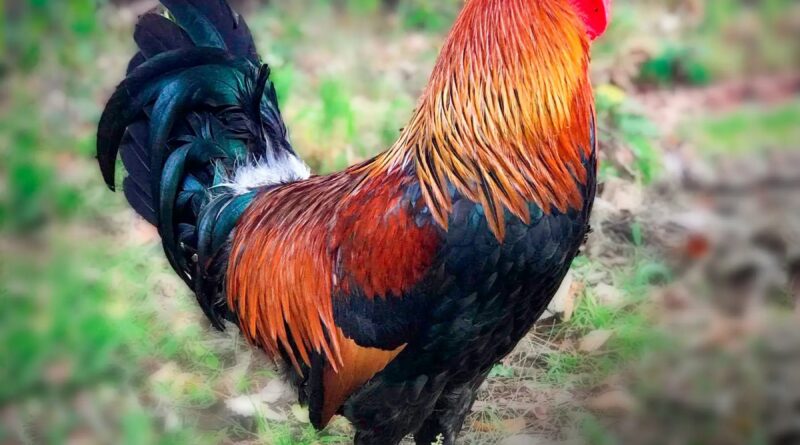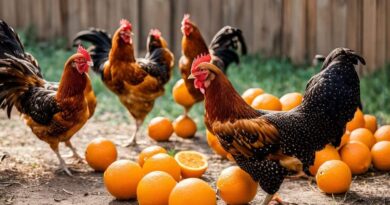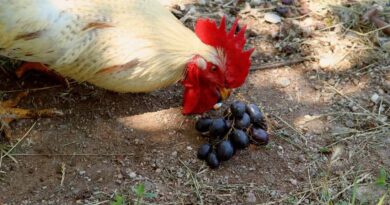Brown Leghorn Chickens: The Ultimate Guide to Care, Eggs, and Breed Facts
Brown Leghorn chickens are one of the most popular and productive poultry breeds, known for their hardiness, prolific egg-laying abilities, and distinctive appearance. Whether you’re a backyard farmer or an experienced poultry enthusiast, these chickens offer a perfect blend of charm and practicality. In this comprehensive guide, we’ll delve into everything you need to know about Brown Leghorn chickens—from their history and characteristics to care tips and egg production.
The Origin and History of Brown Leghorn Chickens
The Brown Leghorn chicken is a variety of the broader Leghorn breed, which originated in the Tuscany region of Italy. The name “Leghorn” is derived from the port city of Livorno, where these chickens were first exported. The breed gained popularity in the United States and Europe during the 19th century due to their unparalleled egg-laying capabilities.
While several color variations exist within the Leghorn breed, the Brown Leghorn is particularly admired for its rich, chestnut-brown plumage and elegant demeanor. These chickens were bred for both productivity and adaptability, making them a favorite among farmers in diverse climates.
Physical Characteristics of Brown Leghorns
Brown Leghorns are medium-sized chickens with a sleek, athletic build. Their physical traits make them easily recognizable among poultry enthusiasts:
- Plumage: The hens sport a beautiful blend of rich brown and chestnut feathers with black tail feathers, while the roosters boast a more dramatic appearance with glossy black tails, red hackles, and saddle feathers.
- Comb and Wattles: Both hens and roosters have large, bright red single combs and wattles, which are more prominent in roosters.
- Earlobes: Their white earlobes are a signature trait of the Leghorn breed, setting them apart from other chickens.
- Body Shape: These chickens have a streamlined, upright posture with strong, yellow legs that support their active lifestyle.
Temperament and Behavior
Brown Leghorns are known for their lively and independent personalities. They thrive in free-range environments, where they can explore, forage, and exhibit their natural behaviors. Here’s what you can expect in terms of temperament:
- Active and Energetic: Brown Leghorns are constantly on the move, scratching the ground and searching for insects.
- Skittishness: They can be shy and wary of humans, which makes them less likely to be lap chickens but excellent foragers.
- Social Dynamics: These birds are generally non-aggressive, but their high energy levels can sometimes make them dominant in mixed flocks.
Egg-Laying Capabilities
Brown Leghorns are prized for their prolific egg production. They are one of the most reliable layers among all chicken breeds, making them ideal for both small farms and large-scale egg production.
- Egg Output: A healthy Brown Leghorn hen can lay around 280–320 eggs per year.
- Egg Size and Color: The eggs are typically large and white, with a smooth shell.
- Laying Age: Hens start laying at around 5 months old, which is relatively early compared to other breeds.
- Consistency: Their egg production remains steady for at least the first 2–3 years of their laying cycle.
Feeding and Nutritional Needs
Proper nutrition is crucial for the health and productivity of Brown Leghorn chickens. Their active nature and high egg production require a well-balanced diet:
- Starter Feed (0–6 Weeks): Provide chick starter feed with at least 18–20% protein to support their rapid growth.
- Grower Feed (6–20 Weeks): Transition to grower feed containing 16–18% protein as they mature.
- Layer Feed (20+ Weeks): Once they start laying eggs, offer layer feed with 16–18% protein and added calcium for strong eggshells.
- Supplements: Provide oyster shells or crushed limestone for calcium, and grit to aid digestion.
- Treats and Foraging: Allow them to forage freely and offer occasional treats like mealworms, fruits, and vegetables for variety.
Housing Requirements
Brown Leghorns are adaptable but need well-designed housing to stay healthy and productive. Key considerations for their housing include:
- Space: Provide at least 4 square feet of indoor coop space per chicken and 8–10 square feet of outdoor run space.
- Perches: Install sturdy perches for roosting at night. Brown Leghorns prefer higher perches due to their active nature.
- Ventilation: Ensure proper airflow in the coop to prevent respiratory issues.
- Nesting Boxes: Offer one nesting box for every 4–5 hens. Keep them clean and lined with straw or wood shavings.
- Predator Protection: Secure the coop and run with predator-proof fencing to keep them safe from foxes, raccoons, and birds of prey.
Health and Disease Management
Maintaining the health of your Brown Leghorn chickens involves proactive care and regular monitoring. Here are some tips to keep them in peak condition:
- Vaccinations: Vaccinate chicks against common poultry diseases like Marek’s disease.
- Parasite Control: Regularly check for mites, lice, and worms, and treat infestations promptly.
- Hygiene: Clean the coop weekly and replace bedding to prevent the buildup of bacteria and ammonia.
- Dietary Support: Provide vitamin and mineral supplements during molting or periods of stress.
- Observation: Monitor your chickens daily for signs of illness, such as lethargy, loss of appetite, or changes in comb color.
Breeding Brown Leghorns
If you’re interested in breeding Brown Leghorns, their reproductive traits make them a practical choice:
- Broodiness: Brown Leghorns are not naturally broody, which means they rarely sit on their eggs. If you want to hatch chicks, consider using an incubator or a broody hen from another breed.
- Mating Ratio: A ratio of one rooster to 8–10 hens ensures fertile eggs without overburdening the hens.
- Hatch Rate: With proper incubation conditions, the hatch rate for Brown Leghorn eggs is typically high.
Seasonal Care Tips
Adapting your care routine to the changing seasons ensures the well-being of your Brown
Leghorns:
Spring and Summer:
- Provide shade and fresh water to prevent heat stress.
- Offer dust baths to keep them cool and parasite-free.
Fall:
- Prepare for molting season by increasing protein in their diet.
- Inspect the coop for drafts and leaks.
Winter:
- Insulate the coop and add extra bedding for warmth.
- Use heated waterers to prevent freezing.
Pros and Cons of Brown Leghorn Chickens
Like any breed, Brown Leghorns come with their advantages and drawbacks:
Pros:
- Exceptional egg production.
- Hardy and adaptable to various climates.
- Low feed-to-egg ratio, making them economical.
- Attractive appearance and active foraging skills.
Cons:
- Less friendly and harder to tame than some other breeds.
- May require more secure fencing due to their flighty nature.
- Not ideal for those seeking a broody breed.
Why Choose Brown Leghorn Chickens?
Whether you’re looking to boost egg production or add diversity to your flock, Brown Leghorns are a fantastic choice. Their combination of productivity, adaptability, and low-maintenance requirements makes them suitable for hobbyists and commercial farmers alike.
Conclusion
Brown Leghorn chickens are a treasure for poultry enthusiasts, offering beauty, efficiency, and resilience. By providing proper care, nutrition, and housing, you can enjoy their abundant egg production and lively personalities for years to come. Whether you’re starting a small backyard flock or expanding your existing setup, Brown Leghorns are sure to be a rewarding addition




